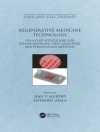Globally, action to prevent HIV spread is inadequate. Over 16, 000 new infections occur every day. Yet we are not helpless in the face of disaster, as shown by the rich prevention experience analyzed in this valuable new compendium. "Best pr- tice" exists-a set of tried and tested ways of slowing the spread of HIV, of persuading and enabling people to protect themselves and others from the virus. Individually, features of best practice can be found almost everywhere. The tragedy, on a world scale, is that prevention is spotty, not comprehensive; the measures are not being applied on anywhere near the scale needed, or with the right focus or synergy. The national response may concentrate solely on sex workers, for example. Elsewhere, efforts may go into school education for the young, but ignore the risks and vulnerability of men who have sex with men. Action may be patchy geographically. AIDS prevention may not benefit from adequate commitment from all parts and sectors of society, compromising the sustainability of the response. In some countries matters are still worse-there is still hardly any action at all against AIDS and scarcely any effort to make HIV visible. It is no wonder that the epidemic is still emerging and in some places is altogether out of control.
Ralph J. DiClemente & Laura Gibney
Preventing HIV in Developing Countries [PDF ebook]
Biomedical and Behavioral Approaches
Preventing HIV in Developing Countries [PDF ebook]
Biomedical and Behavioral Approaches
Achetez cet ebook et obtenez-en 1 de plus GRATUITEMENT !
Langue Anglais ● Format PDF ● ISBN 9780306471575 ● Éditeur Ralph J. DiClemente & Laura Gibney ● Maison d’édition Springer US ● Publié 2006 ● Téléchargeable 3 fois ● Devise EUR ● ID 4622703 ● Protection contre la copie Adobe DRM
Nécessite un lecteur de livre électronique compatible DRM












